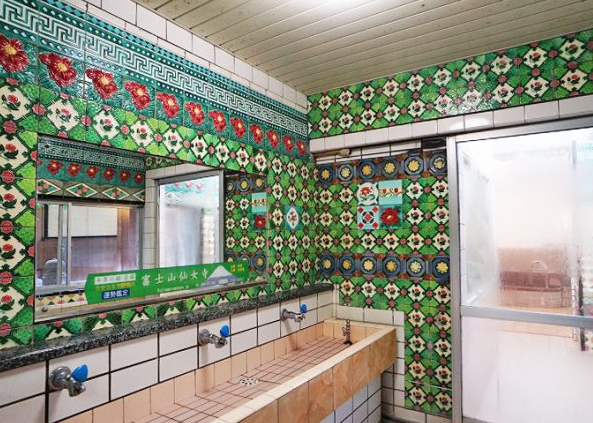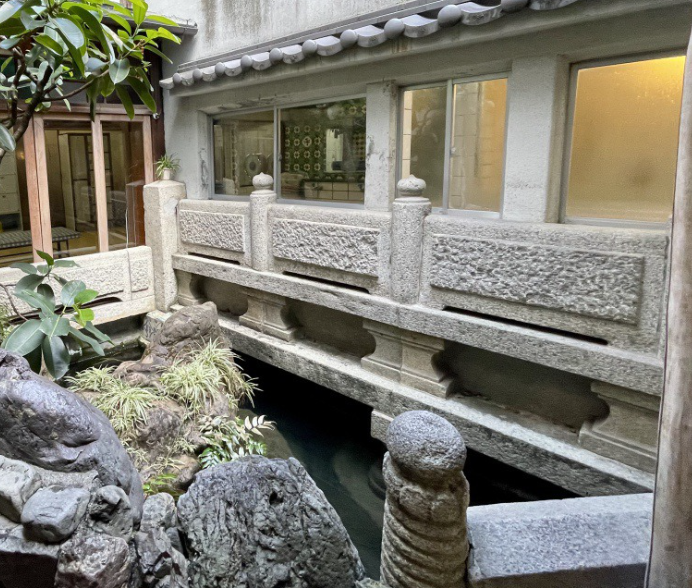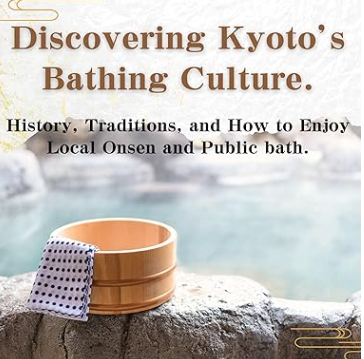The Hot Springs Ceremony is more than simply soaking in a bath.
By following the proper methods of Japanese bathing, this ritual promotes deep relaxation and supports overall well-being.
Participants learn traditional bathing etiquette and experience the cultural meanings and values embedded in Japan’s long-cherished bathing practices.
Additionally, by learning about the history and unique characteristics of the hot spring region or facility, guests can appreciate not only the bath itself but also the stories and traditions behind it—allowing them to enjoy the hot springs on a deeper and richer level.
Funaoka Onsen
Funaoka Onsen was originally built as a traditional Japanese ryokan in 1923. It was completely renovated in 1932 and now features a herbal bath, a high-temperature bath, jet baths, and an electric bath. In 2003, it was designated as a Tangible Cultural Property of Japan.
It is a very popular facility among Japanese visitors as well. The changing room is like an art museum, with lacquered ceilings that showcase exquisite craftsmanship.
Urushi lacquerware is a traditional Japanese craft in which the natural sap of the urushi tree is used to coat the surface of bowls, plates, furniture, and other items, making them both beautiful and durable.
Features of Urushi Lacquerware
- Beautiful gloss: The deep black and red shine gives it an elegant appearance.
- Highly durable: It is resistant to scratches and can be used for many years.
- Natural material: Instead of chemical paints, it uses the sap of a tree.
- Handcrafted skill: Artisans apply multiple layers of lacquer, polishing each one carefully. This process requires time and great craftsmanship.
In addition, urushi lacquerware is said to be “a vessel that grows with you”, because its color and texture slowly change as you continue to use it, becoming more comfortable in the hand over time.

The changing room is adorned with the elegant decoration of majolica tiles.
The history of majolica tiles is long, beginning over 800 years ago in Europe. From there, Japanese-style majolica tiles were developed and eventually exported to countries around the world.
Features of majolica tiles
- Vibrant colors: Bright reds, blues, greens, and other eye-catching hues that enhance buildings and furniture.
- Glossy surface: The glaze creates a reflective, beautiful shine.
- Decorative designs: Patterns often include flowers, geometric shapes, and other artistic motifs.
- Durable: Made of ceramic, they are strong and often used on walls and floors.
In Japan, majolica tiles were widely used in Western-style architecture of the early Showa period, in train stations, and on the walls of public baths, making them a traditional decorative element that adds color and charm to buildings.

The connecting corridor uses a real, historic bridge.
From the open-air bath, you can see a stone bridge on the connecting corridor.
This bridge was actually in use and was acquired after it was scheduled to be demolished in 1932 for the construction of a railway line.

The men’s and women’s baths are located on opposite sides and switch daily.
Each open-air bath offers a different experience, so by visiting on two consecutive days, you can enjoy both types of baths.
For those curious about the rich culture of Japanese hot springs and public baths, this book is a must-read!

my self introduction

I am a Japanese who was born and raised in Kyoto, Japan. I want everyone to experience Kyoto’s great hot springs, so I work as a tour guide, teaching tourists proper bathing etiquette


コメント